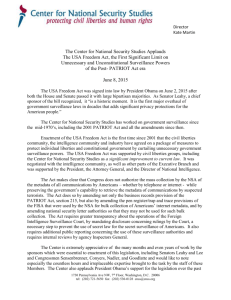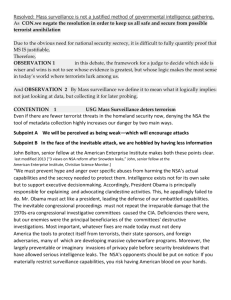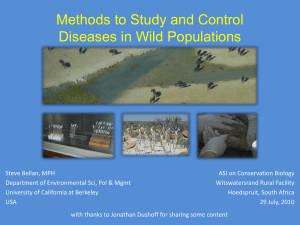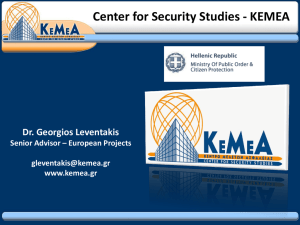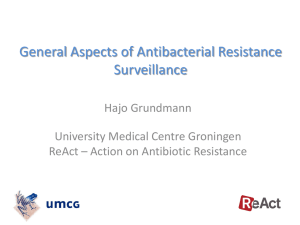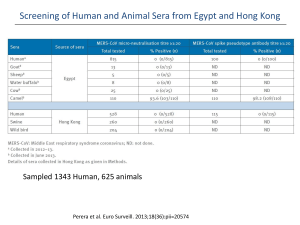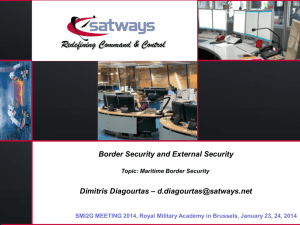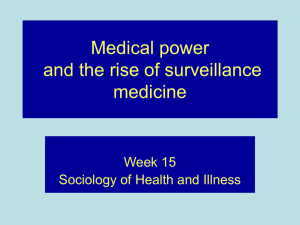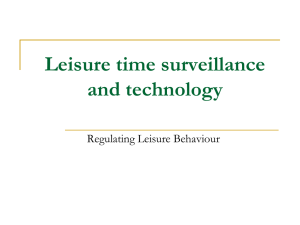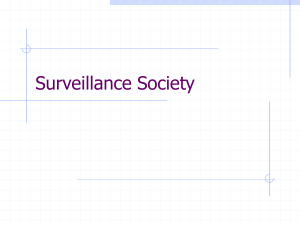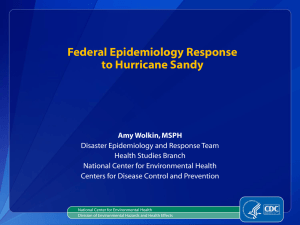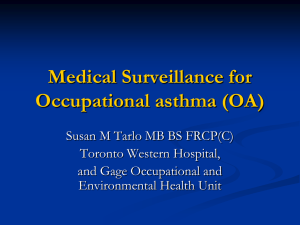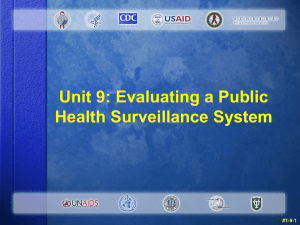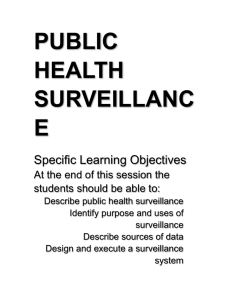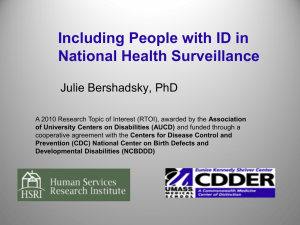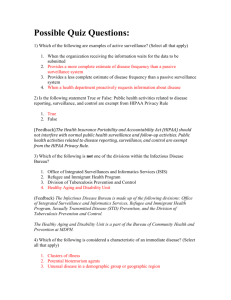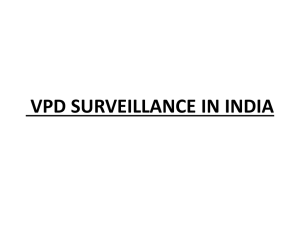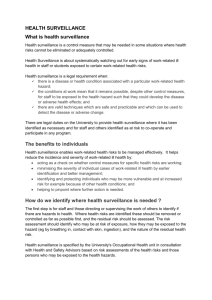design-and-social
advertisement
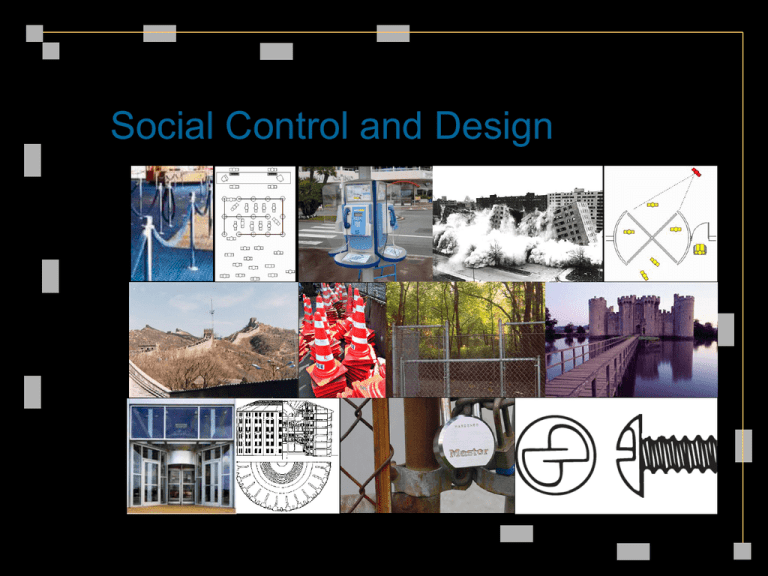
Social Control and Design General Deterrence The capacity of punishment to make other people conform In other words, punish a person to “send a message” But what is the message? “In case you forgot, here is what the rule around here is…” “We pay attention around here…” “Good people do this …” But catching people and punishing them is an expensive (and uncertain) way to send a message. The Best Social Control is built-in Not Just Signs... The built environment is full of social control or Social Control is built into the environment The “City of Green Benches” ...was also getting known as ... The City of Senior Citizens Nothing a little architecture couldn’t fix… Styles of Social Control Style •Penal •Compensation •Conciliation •Therapeutic •Reform •Prevention Focus act consequences or damage relationship person causes opportunity An ounce of prevention is worth a pound of cure... Ben Franklin (of fire prevention) Perey Turnstiles The leader in Turnstile design and manufacturing. Model 138 portable, secure, ticket scanning, battery powered, radio communicating in Major League Baseball Perey was founded in 1913, providing security, crowd management, admissions and access control, loss control devices all over the world. One-way three and four arm waist high turnstiles. These simple turnstiles keep people going in one direction and do not allow passage in the opposite direction. Sources • Jane Jacobs • Oscar Newman • “Broken Window Theory” Jane Jacobs Described city life in her 1961 classic The Life and Death of Great American Cities and suggested reasons why certain areas are safe. She argued that much modern city planning and development destroyed the traditional, mixed-use communities that produce a vibrant street life and social stability. Among other observations she suggested that a city space is safe if it is well populated, or has many "eyes". Mixed-use areas where residences are located next to twenty-four hour businesses create such spaces. Jacobs argued that high rise public housing complexes destroyed such communities Jane Jacobs’ Three Principles • Territoriality - the ability of users of space to take control of and manage that space • Surveillance - potential offenders prefer anonymity and avoid surveillance • Crowding out crime - activity increases surveillance and reduces criminal opportunities. Oscar Newman Architect Reflections on Pruitt-Igoe disaster led to Defensible Space in early 1970s DEFINITION "...a surrogate term for the range of mechanisms - real and symbolic barriers, strongly defined areas of influence, and improved opportunities for surveillance - that combine to bring an environment under the control of its residents." Broken Window Theory • James Q. Wilson & George Kelling 1982 • Physical signs of disorder prompt further crimes • Although rooted in material environment, interpretation has generally been in terms of crackdown on “gateway crimes,” minor offenses, vandalism (Giuliani-ism) The Pruitt-Igoe Lesson The Pruitt-Igoe Housing Project • • • • St. Louis, Missouri Completed in 1956. A “bricks and mortar” solution to urban decay Things went from bad to worse during 60s Architect’s Vision for the Common Areas The Reality Exterior The Solution The Pruitt-Igoe Lesson Crime prevention "hinges on the ability to come together in joint action.” Physical environments can "discourage the natural pursuit of a collective action" Four elements of physical design that contribute to the creation of defensible space: I. "The territorial definition of space to reflect the areas of influence of inhabitants. II. Position windows, etc. to allow residents to naturally survey their living environment. III. Use building forms that avoid leading others to perceive the vulnerability. IV. Enhance safety by locating adjacent to activities that do not provide continued threat Defensible Space Summary • Design does not cause crime, but bad design can facilitate victimization (esp. of the poor) • A central characteristic of defensible space is a hierarchy of levels that goes from the apartment to the street, from private to semi-private to semi-public to public. Natural Surveillance Plan for Surveillance Sliding Door : Lots of freedom of movement, no directional control, hard to watch http://web.njit.edu/~ar26/research/ticketinglobbysecurity/security/Web%20Pages/Crowd%20Control%20Entry%20Analysis.html Plan for Surveillance Swinging Door : More directional control possible, improved surveillance http://web.njit.edu/~ar26/research/ticketinglobbysecurity/security/Web%20Pages/Crowd%20Control%20Entry%20Analysis.html Plan for Surveillance Revolving Door : Maximum control and surveillance but disabled entrance reduces this somewhat http://web.njit.edu/~ar26/research/ticketinglobbysecurity/security/Web%20Pages/Crowd%20Control%20Entry%20Analysis.html Target Hardening Target Hardening http://www.facommons.com/misc/adam/?section=photos Clarify Ambiguous Spaces “Ambiguous space” does not say clearly who it belongs to, who may use it, what it may be used for, or who is responsible for it. Express territoriality Spatial Hierarchy Spatial Hierarchy Spatial Hierarchy No Spatial Hierarchy Shared entry paths lead to problems of responsibility and territoriality Clearly Distinguished Shared and Private Paths Shared Path with Ambiguity Minimized Building Social Capital When neighbors’ paths frequently cross, they get used to seeing one another, stop for chats, etc. Building Social Capital A hierarchy of spaces allows neighbors to interact in different ways. Multiple connections make for stronger community. Building Social Capital Expressing Community Norms Expressing Community Norms Help People Stay Out of Each Other’s Way Feedback and Information Tell me where to go.... Make Sharing Space Easier Make Sharing Space Easier Show People Where to Go Higher density of pedestrians permits development of “channels” that make it clear which doors are in and which are out. Fewer people and more doors make everyone make the choice anew. And show others where not to Reduce Costs of “Cooperation” Avoid Asking for Trouble • “People will be people” – don’t design as if this is not the case • Avoid creating opportunity for “innocent” behavior that will be seen as vandalism • Make real playthings interesting and challenging Use Design to Facilitate Pro-pro-social Behavior IDEO’s Social Mobiles http://www.ideo.com/case_studies/Social_Mobiles/menu.html The Electric Shock Mobile http://www.ideo.com/case_studies/Social_Mobiles/SoMo1-3.html The Electric Shock Mobile The Electric Shock Mobile The Catapult Mobile http://www.ideo.com/case_studies/Social_Mobiles/SoMo1-5.html The Catapult Mobile The Catapult Mobile “Geek Paths” Through Gardens Kids Play Near Doorways… CPTED Crime Prevention Through Environmental Design Good Design • delineates paths of movement • defining areas of activity for particular users through their juxtaposition with internal living areas • provide for natural opportunities for visual surveillance • create a clear understanding of the function of space, and who its users are and ought to be. Risks Getting it wrong Over building Surveillance and Threats to Privacy Geographic Substitution and Displacement Too Much Design as Social Control What can the state do? Set an example Police design Regulation Change liability rules THE END
